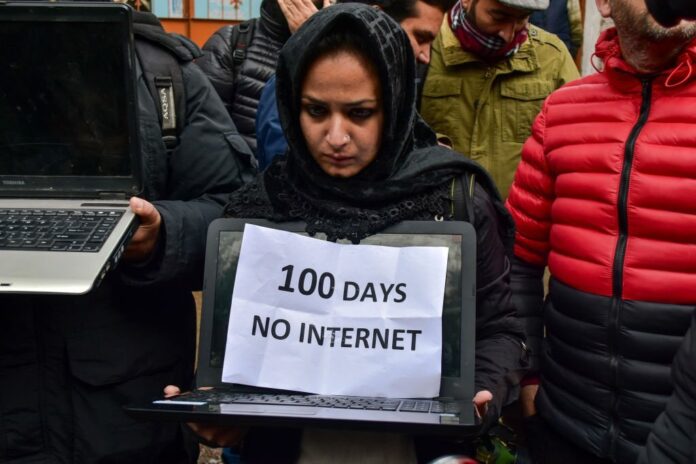— Stamping the Chankiyan Classic realism in practice
By Dr. Waleed Rasool
Attempting to erase Nehru’s imprint on the country is a formidable task because he was an integral part of modern India’s DNA. Exclude Nehru from the equation, and you risk delivering a blow to the essence of India. But on divergence side when personal gain is envisioned, do not hesitate to slam your leaders in the face.
The irony lies in the fact that the BJP, which is now critiquing Nehru for not adopting a more aggressive approach. Nevertheless, the legacy of Patel is expected to endure, thanks to Modi’s recent emphasis on the Hindutva ideology, forming a new chapter in the political narrative and bring the Chankiyan classic realism in open where it cant be only seen but one can feel it.
The BJP manifesto advocated for the abrogation of Article 370 and Article 35A, signalling a proactive stance towards addressing historical grievances. This approach is seen as a departure from Nehru’s reluctance to annex Kashmir forcefully, contrasting with the more assertive integration of other princely states.
The Modi government stated in a written reply in Parliament in 2015 that there was no intention to revoke Article 370. However, on August 5, it was abrogated. Now, on December 11, the same strategic move is being perceived as a bid to secure victory in the 2024 elections, aligning with the party’s dominant pro-Hindu stance.
Now come along as we dig into the historical foundations of Kashmir.
In 1947, the inception of Article 370 traces back to the signing of the Instrument of Accession by Maharaja Hari Singh, marking Jammu and Kashmir’s alignment with India under specific conditions. This pivotal document served as the gateway for the state’s integration into India, albeit with distinctive privileges.
Under the umbrella of Article 370, Jammu and Kashmir enjoyed special privileges that restricted the authority of the Indian Parliament to legislate on defense, external affairs, and communication. This unique provision empowered the state legislature of Jammu and Kashmir to enact laws specifically tailored for its populace.
Notably, the legislative authority of the Indian Parliament in Jammu and Kashmir was confined to matters explicitly outlined in the Instrument of Accession. Approval from the Jammu and Kashmir Constituent Assembly was imperative for the enactment of laws on other subjects.
On August 5, 2019, President Ram Nath Kovind shook things up by issuing C.O. 272, tweaking Article 367 and altering the interpretation of Article 370. This move allowed the Union to amend Article 370 sans the Constituent Assembly’s nod, a game-changer for Jammu and Kashmir’s special status. With the state under President’s Rule, the Union Parliament swiftly recommended Article 370’s abrogation through a Statutory Resolution on the same day.
On August 6, 2019, President Kovind made it official with C.O. 273, nullifying all Article 370 clauses except clause 1, effectively ending Jammu and Kashmir’s special status. A legal challenge hit the scene on August 6, and by August 9, 2019, the Union Parliament sealed the deal with the Jammu and Kashmir Reorganisation Act, 2019
Chief Justice D.Y. Chandrachud led the five-member bench, asserting that Article 370 was considered an interim arrangement during war conditions, and the Constituent Assembly of Jammu and Kashmir was never intended to be a permanent body. The court deemed the 2019 declaration a valid exercise of power, stating that Kashmir lost its sovereignty upon joining India. Furthermore, the court upheld the reorganization of Ladakh as a union territory and directed the election commission to conduct legislative assembly elections in Kashmir by September 30, 2024. The court misunderstood and concealed the reality concerning Article 370.
A new question arises if Article 370 was intended to be temporary, why did Maharaja and Sheikh Abdullah advocate for their own flag and sovereignty? What was the purpose of signing the Instrument of Accession, only to later contemplate its abrogation? It appears that the demand for a separate flag and other symbolic elements wasn’t merely for temporary satisfaction but rather an assertion of Kashmiri identity.
Hence modi not to deceive the people by suggesting that Article 370 was inevitably fated to be abrogated. Instead, the argument is centered on the interpretation of the Constitution. The discussions around autonomy, symbols, and the Instrument of Accession raise questions about the original intent and how it aligns with subsequent decision
Now we have to recall the words spoken by Sheikh Abdullah. Constituent assembly 11 august 1952,
“Here I would like to point out that the fact that Article 370 has been mentioned as [a] temporary provision in the Constitution does not mean that it is capable of being abrogated, modified, or replaced unilaterally. In actual effect, the temporary nature of this Article arises merely from the fact that the power to finalize the Constitutional relationship between the State and the Union of India has been specifically vested in the Jammu and Kashmir Constituent Assembly. It follows that whatever modifications, amendments, or exceptions that may become necessary either to Article 370 or any other Article in the Constitution of India in their application to the Jammu and Kashmir State are subject to decisions of this Sovereign body.”
Sheikh Abdullah’s stance found support from the Supreme Court of India in the Sampat Prakash case, where it rejected the characterization of Article 370 as a temporary provision. The five-judge bench argued that Article 370, governing the Government of Jammu and Kashmir, has consistently remained operative and has not ceased to be in effect. Another perspective contended that its temporariness was contingent upon a plebiscite to ascertain the people’s wishes.
In addition, the focus shifts to the Keshvanand Bharti judgment, which established that certain aspects of the Constitution, termed “basic features,” are immune to alteration through constitutional amendments. However, a significant shift in interpretation occurred, challenging this precedent.
The Supreme Court, as the authoritative interpreter of the Constitution, clarified that its jurisdiction extends to interpreting the language employed in the Constitution. Decisions made under Article 141 are considered legally binding. When examining the term “life” in Article 21, the Court determined that it encompasses the notion of “living with human dignity.” Furthermore, the Court recognized the implicit protection of the right to privacy under Article 21.
Contrary to the previous interpretation, the Court asserted that the term “temporary” in the heading of Chapter XXI doesn’t inherently imply a fleeting nature. Instead, any temporary provision may be labeled as “special.” The addition of the term “special” in the chapter heading resulted from the 13th constitutional amendment in 1962. Sardar Patel himself acknowledged in the Constituent Assembly that a “special provision” had been established for Kashmir due to the unique relationship between the central government and the state.
However, the UN resolution of January 24, 1957, is intact because pseudo-legal one side interpretation is compulsion of the Indian present Government and its allied agencies to grind their own axis . To legitimize the BJP, move of the 5th August is actually a strategic move for the upcoming elections? It is formidable psychological and political implications therefore, for principal party it legitimized the power peg of Indian brand classic realism.
Dr. Waleed Rasool holds PhD (IR) Asst. Professor & Director of Institute of Multi-Track Dialogue, Development Studies.























